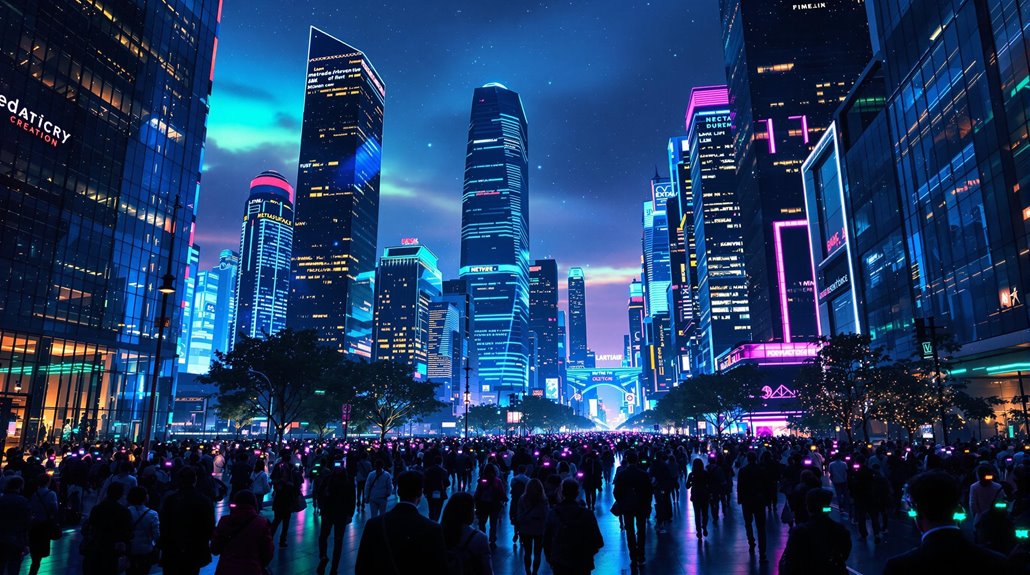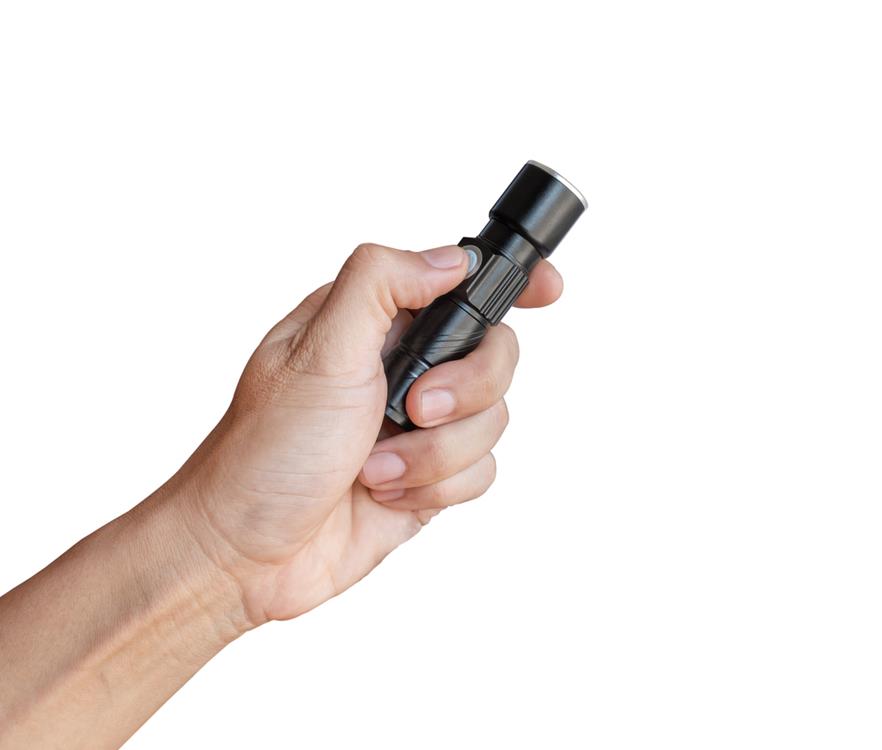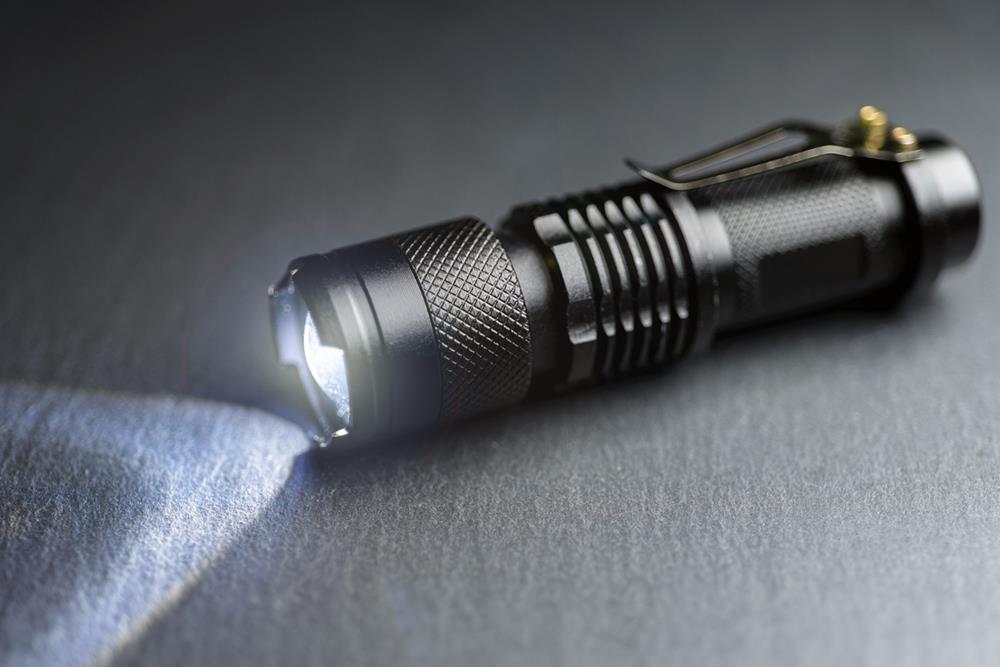In the Future Night-Vision Lenses Could Be so Thin and Light That We Can All See in the Dark

Imagine slipping on a pair of glasses as thin and light as cling wrap that lets you see clearly in the dark. That's the exciting future metasurface technology promises. By using cutting-edge materials like lithium niobate, these lenses convert infrared photons into visible light without relying on bulky equipment or cryogenic cooling. Unlike traditional systems with their green glow, these lenses provide high-resolution images with improved color and clarity. They're set to seamlessly integrate into daily life, making nighttime activities safer and more accessible. Uncover how this breakthrough could revolutionize everything from personal safety to night-time adventures.
Understanding Night-Vision Technology
Night-vision technology has come a long way from its bulky beginnings. You no longer need to rely on cumbersome image-intensifier tubes to see in the dark. These traditional systems converted infrared photons into visible light using complex mechanics, making them heavy and awkward. Now, with metasurface-based upconversion technology, things have drastically changed. This groundbreaking technology directly processes infrared photons into visible light, eliminating the need for electron conversion. As a result, the device design becomes much simpler and more efficient. One of the most exciting advancements is that cryogenic cooling is no longer required. This means the night-vision lenses are incredibly thin and light, weighing less than a gram—comparable to cling wrap. Such compactness is ideal for consumer applications, allowing for everyday use in night-vision eyewear. Plus, these new lenses provide high-resolution imaging by capturing both infrared and visible light in a single shot. This dual capability greatly improves image quality, making what you see clearer and more detailed than ever before. The future advancements in night vision technology promise improved detection capabilities, with AI and machine learning enhancing real-time data analysis for rescues. As research continues, expect enhancements in wavelength sensitivity and image processing techniques, paving the way for sophisticated night-vision devices you can easily use in daily life.
Limitations of Traditional Systems
Despite their historical importance, traditional night vision systems come with notable drawbacks. They rely on bulky electronic image-intensifier tubes that convert visible light and infrared photons into images. This makes them cumbersome and inconvenient for many users. The complex mechanics involved, such as photocathodes and microchannel plates, contribute considerably to their size and weight, making miniaturizing these systems a challenging task.
Another limitation is the need for cryogenic cooling to reduce thermal noise, which is crucial for producing clearer images. This requirement further adds to the bulk and complexity of traditional night vision systems. Consequently, these systems are not easily accessible for consumer use and lack practical applications in everyday life due to their size and operational demands.
Moreover, the images produced by these conventional devices are characterized by a distinct green glow. While iconic, this phosphor-coated screen effect isn't always ideal for all situations. The cumbersome nature of traditional night vision technologies hinders their integration into consumer-friendly devices and everyday applications. As a result, there's a growing need for advanced alternatives that are lighter, more compact, and better suited for a wider range of uses without the existing limitations. Additionally, night vision technology significantly enhances visibility in low light, which is critical for spotting tiny objects and navigating unknown terrain.
Metasurface Innovation Explained

In the domain of cutting-edge night vision technology, metasurface-based upconversion emerges as a groundbreaking advancement. This original technology uses a non-local lithium niobate metasurface to transform infrared photons into visible light, bypassing the traditional electron conversion process. By doing so, it eliminates the need for bulky components, paving the way for ultra-thin lenses that are as light as cling wrap, weighing less than a gram. Such a thin and lightweight design revolutionizes night vision, making it more accessible and practical. A key advantage of this technology is its ability to operate at room temperature. This reduces thermal noise, enhancing imaging quality considerably compared to conventional systems that require cryogenic cooling. The high-resolution upconversion process converts 1550-nm infrared light to 550-nm visible light, allowing you to capture both visible and nonvisible light in a single image. Color night vision technology further enhances visibility by allowing users to view their surroundings in vibrant colors rather than the typical green.
- Metasurface Efficiency: Elevates infrared energy without electron conversion.
- Ultra-thin Design: Weighs less than a gram, comparable to cling wrap.
- Room Temperature Operation: Minimizes thermal noise for clearer imaging.
- Broad Wavelength Capture: Integrates visible and nonvisible light seamlessly.
This metasurface originality sets the stage for future advancements in broadband infrared imaging and refined image processing techniques.
Research Findings and Insights
Building on the foundation of metasurface creativity, recent research findings reveal promising insights into the practical applications of ultra-thin night-vision lenses. Conducted by the Australian Research Council's TMOS, this breakthrough enables a new age of lightweight, everyday use night vision technology. These lenses are as thin as cling wrap and weigh less than one gram, making them incredibly convenient for diverse applications.
The study, published in *Advanced Materials*, highlights the use of a metasurface-based upconversion technology that efficiently processes light. This technology allows the simultaneous capture of infrared and visible light, transforming how night vision lenses function. The non-local lithium niobate metasurface elevates photon energy into the visible spectrum, bypassing the need for bulky components and cryogenic cooling, which are staples in traditional systems.
This pioneering approach has demonstrated high-resolution up-conversion from 1550-nm infrared light to 550-nm visible light, greatly enhancing image quality and processing capabilities. Researchers aim to expand the lenses' wavelength sensitivity and improve image processing techniques further. These advancements promise to revolutionize night vision applications, offering transformative potential for surveillance, navigation, and diverse low-light activities in everyday life. This technology could be particularly beneficial in post-disaster reconnaissance, where enhanced visibility is crucial for efficient navigation and assessment in low-light conditions.
Everyday Applications and Benefits

Imagine slipping on a pair of glasses that, by way of innovation, seamlessly integrate ultra-thin night-vision lenses weighing less than a gram. Suddenly, the dark isn't so intimidating. These lightweight wonders, designed for everyday use, improve your visibility during nighttime activities by capturing both visible and infrared light. Whether you're walking your pet or traversing the streets, these lenses greatly enhance your safety in low-light conditions. They make the world clearer, providing better situational awareness as you move through your day-to-day life.
With this technology, night vision becomes just another part of your daily routine, not something reserved for special equipment. The reduction in bulk from traditional systems makes these lenses more accessible and appealing for widespread consumer use. Imagine the increased outdoor participation as people feel more confident and safer exploring urban environments at night.
- Enhanced Safety: Travel dark streets with confidence and clarity.
- Improved Situational Awareness: Simultaneously see visible and infrared light, offering a fuller picture.
- Convenience: Integrate seamlessly into current eyewear, making them easy to adopt.
- Increased Participation: Encourage more nighttime activities, fostering a more active lifestyle.
These night-vision lenses truly redefine how you experience the night. Additionally, future improvements in graphene technology promise to further revolutionize night vision by making it even lighter and more efficient, broadening its applications beyond military use.
Impact on Military and Security
Picture how ultra-thin night-vision lenses, weighing less than a gram, could transform military and security operations. Imagine military personnel equipped with these compact visual aids, enhancing operational effectiveness in challenging low-light environments. Forget the bulk of traditional gear; these lenses reduce fatigue during extended missions. With metasurface technology, these lenses offer real-time image processing, providing a significant edge in nighttime surveillance and reconnaissance.
Enhanced night vision means improved situational awareness for soldiers. This heightened awareness directly contributes to mission success and increased safety in combat scenarios. The ability to see clearly in the dark guarantees that military personnel can make informed decisions swiftly, reducing risks and maximizing efficiency.
Ultra-thin lenses open the door to creative applications in military training and operations. They allow for more realistic simulations and tactical exercises under varying light conditions, preparing soldiers for real-world challenges. This technology doesn't just optimize current military efforts; it has the potential to redefine military strategies altogether. Welcome the future where night-vision capabilities are accessible, efficient, and groundbreaking, making every mission safer and more successful. The impact on military and security promises to be profound and far-reaching. As night vision technology continues to evolve, its civilian applications, such as enhancing safety during nighttime activities like camping and hiking, become more accessible and beneficial too.
Future Research Directions

The road ahead for night-vision lenses is paved with promising research opportunities. You'll find that expanding the wavelength sensitivity to capture a broader range of infrared light is a key focus, improving visibility in diverse conditions. Researchers are advancing image processing techniques, such as edge detection, to improve the quality and usability of images. This means that even in the darkest environments, the images you see will be clearer and more useful. Efforts are also underway to overcome the limitations of angular loss in non-local metasurfaces, which could greatly improve the performance of ultra-thin night-vision lenses. Imagine having lenses so thin and efficient that they're almost invisible, yet they provide exceptional clarity. Furthermore, there's a push towards broadband infrared imaging, which could lead to adaptable applications in low-light environments, making these lenses useful in a range of settings. The integration of smart technology with night-vision lenses is another exciting research direction, aiming to offer improved functionalities and user experiences. Consider these future research directions:
- Expanding infrared sensitivity for improved visibility.
- Advancing image processing for better image quality.
- Overcoming metasurface limitations to improve thinness.
- Exploring smart technology integration for improved user experience.
Additionally, integrating solar power compatibility with night vision technology can ensure continuous operation and support sustainability, making it practical for off-grid environments.
Potential for Consumer Adoption
With ultra-thin night-vision lenses weighing less than a gram and boasting a thickness comparable to cling wrap, the potential for consumer adoption is substantial. You can easily integrate these lenses into your existing eyeglass frames, eliminating the need for bulky or specialized equipment. This seamless adoption process guarantees they become a part of your daily routine, improving convenience and portability. The lenses capture both visible and infrared light in a single image, dramatically boosting image quality and usability over traditional night-vision systems. Regardless of if you're a pedestrian traversing dark streets or a driver dealing with low-light conditions, these lenses offer improved safety. Such practical applications make night-vision eyewear not just a luxury, but a necessity. As the market expands, advancements in miniaturization and affordability will likely drive widespread consumer adoption. Imagine using these lenses for recreation, security, or personal safety, knowing the technology is first-rate and user-friendly. The combination of cutting-edge technology, improved image quality, and increased portability positions these night-vision lenses as a compelling choice for diverse consumers. Welcome the future where seeing in the dark is as simple as wearing your favorite pair of glasses. The integration of AI in night vision systems enhances detection capabilities, allowing for immediate recognition and quick danger spotting, further boosting safety and user experience.




